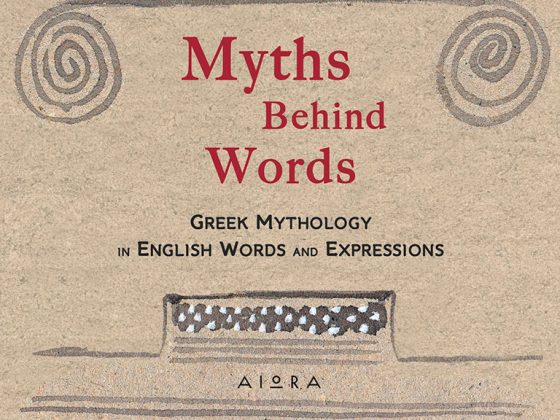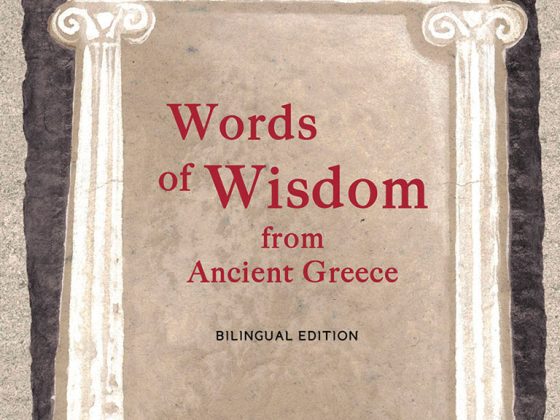Kolonaki / Lycabettus Hill
Kolonaki
Functioning once as a gathering space for artists and intellectuals, and often the area where the dream of an urban life was brought to fruition, Kolonaki established itself as an enviable and charming area in Athens. Its mesmerizing neoclassical buildings, together with its social and artistic flair, made Kolonaki one of the city’s most beautiful quarters.
Today, Kolonaki retains its historic and unique character but has also grown into a commercial center. It is here where one can enjoy the most refined shops in Athens and all the renowned fashion houses along with multiple cafés, bars and restaurants, offering a pleasant escape from the hustle and bustle of the city.
Do not miss Cine Dexameni. This historic summer cinema may have modern digital projection machines but the jasmine, the basil and of course the classic canteen remain. The films are chosen with quality criteria, whether they are commercial and blockbusters or not. European cinema has its due there, especially in tributes.
Lycabettus Hill
Lycabettus Hill, the highest point of Athens, has an imposing presence over the Attica basin, with St George chapel on its very top. From there you can enjoy a panoramic view of Athens up to the Piraeus port. According to mythology, the hill was created out of a rock, which goddess Athena was carrying on her way to the Acropolis. The rock fell off her hands when she heard distressing news by a raven and so the rock became what Athenians would later call the hill of Lycabettus. The cable car transferring visitors to the top of the hill started functioning in 1965. Right under the chapel of St George, there is plenty of choice for a meal or a cup of coffee.
Lycabettus funicular: 66 Ploutarchou, Kolonaki
Exarchia
Exarchia, and in particular the quarter of Neapolis, can be defined as the birthplace of literature and culture. All the great Greek artists and intellectuals lived and excelled here, so it established a reputation as the home of the bohemian intellectual, who would flood the multitude of art cafés, printing and publishing houses. Exarhia is still home to the large contemporary publishing houses whilst many small printing offices, resisting the passing of time, can also be found hidden in its streets.
The area of Exarchia is still full of youthful vibrancy and a hint of alternative and hipster culture which is illustrated through an array of restaurants, cafés and bars that fill the streets, whilst there is and also an abundance of alternative events and exhibitions.
Combine your walk to Exarchia with a visit to The National Archaelogical Museum, Greece’s largest archaeological museum and one of the most significant in the world.
Zappeion - National Garden
The Zappeion Garden is a beautiful touch of the history and culture of Athens taking you back in time. Zappeion is ideal for walking and relaxing for the whole family. The imposing Zappeion Hall was constructed in the 19th century and was the first building worldwide built for the Olympic Games. Next to it, the café-restaurant Aigli is an ideal choice for a coffee break with a unique view of the Acropolis and Lycabettus hill.
Next to Zappeion, a verdant paradise in the heart of Athens offers a refreshing walk through history. Here, you will wander around an endless green area, with various endemic trees, and also trees from other continents, a gorgeous lake, a small zoo, a playground and a children’s library.
Right opposite The National Garden, do not miss to visit the stadium which hosted the first Modern Olympic Games. Kallimarmaro Stadium is the only marble stadium in the world and a universal symbol of sports.
Syntagma Square / Panepistimou Str
Syntagma Square
A landmark of Athens, Syntagma square is located right at the heart of the city in front of the Greek House of Parliament. The square’s historical value for Athens and Greece in general is huge. The square is named after the Constitution (‘Syntagma’ meaning ‘constitution’ in the Greek language) that King Otto, the first King of Greece, was obliged to grant after a revolution of the people of Athens.
On the square’s eastern side, you will find the Tomb of the Unknown Soldier, a monument representing the burial site of all the unknown soldiers who gave their lives during the various wars in Greek history. The square’s attraction is the Change of the Guards by members of the Presidential Guard, named Evzones, in front of the Monument of the Unknown Soldier every one hour following a strict set of orchestrated moves.
Panepistimiou Str
Starting from Syntagma Sq and moving towards Omonia Sq, a visitor to Athens has the chance to admire many historical buildings along Panepistimiou Str:
National Library of Greece
Since 1903, the National Library of Greece has been housed at the emblematic Vallianeio Mansion on Panepistimiou Str in Athens. The library is the custodian of Greek literary heritage with documents currently amounting to approximately 2.000.000. Its collection of 5.400 handwritten codices, dating from the 9th to the 19th centuries, is one of the largest ones in the world. The building displays characteristics of the Doric rhythm and the Renaissance mode and is made with pentelic marble on Pireaus stone. On its main entrance you will find the statue of Panages Vallianos.
Iliou Melathron
Iliou Melathron, also known as the Schliemann Mansion, was built in 1878-1879 as the residence of Heinrich Schliemann. It was named after the ancient city of Troy discovered by Schliemann and was the richest private building of Athens and one of the most important works by Ernst Ziller. Today, the building houses the Numismatic Museum of Athens.
Bank of Greece
The building of the Bank of Greece is a listed building which was built between 1933 and 1938, after the Second World War, and used to cover the whole building block until the 1970s.
The Academy of Athens
A characteristic sample of neoclassical architecture and the best work by Theophil Hansen in Greece. The building’s architecture has a lot of similarities with the Acropolis Erectheion. It is famous for its statues of Socrates and Plato, goddess Athena and God Apollon, by the sculptor Leonidas Drosis, found at its exterior, as well as for the pediment on its entrance.
University of Athens
The National and Kapodistrian University of Athens was the first university of Greece and of the Balkans. It consists of a group of buildings forming a double T, with two exterior courtyards with statues. Today, it houses the Rectorate, the Senate and the University’s large ceremonial hall.
Arsakeio School for Girls
One of the most imposing buildings on Panepistimiou St, the mansion of the Arsakeion, was built between 1846-1856 on behalf of the Society for the Promotion of Education and Learning. It was completed thanks to a donation by the expatriate Apostolos Arsakis and was named after him. Stones from the rock of the Acropolis were used in its construction while it adorns a characteristic main entrance decorated with Doric semicolumns and a pediment decorated with the head of goddess Athena. Today, the building houses the Council of State.
Monastiraki / Psyrri
Monastiraki has always stood out for its diversity. Just take a look around the central square and you will see different cultures and religions co-existing. Street theatre, music bands, vendors, groups of friends, tourists, banners, a mosque and a church. You will also find a market with multiple shops for souvenirs or traditional products and also modern stores with clothes, shoes, leather goods and jewelry.
Metro: Line 3 / Monastiraki Station
Do not miss Avissinias Square. This charming square is a hidden corner in Monastiraki, with its own unique atmosphere. Surrounded by colorful buildings, cafes, and antique shops, it is a great spot to discover hidden treasures in the antique stores.
A walk around Psyrri will remind you of an island with its many alleys, theatres and artistic hang outs, with their walls covered with street art. The neighborhood of Psyrri is as if it has come out of an old Greek movie, it has had its ups and downs and is today an ideal choice for a walk in the center of Athens with plenty of stops for a meal and a sweet.
Metro: Line 3 / Monastiraki Station
Do not miss Polis Hammam. In the neighborhood of Psirri you can enjoy a visit to this famous hammam! This is one of the most beautiful hammams with excellent hygienic conditions, where you will get an unforgettable experience of traditional rejuvenation, relaxation and escape from everyday life.
Thissio / Philopappos Hill - Pnyx
The Grand Walk of Athens via Apostolou Pavlou pedestrian street, leads from Makrygianni and Acropolis to Thissio, a small area of Athens on the northwestern side of the Acropolis. Thissio is a place for walks and recreation for Athenians and tourists, with a variety of restaurants, taverns, bars and cafés.
Metro: Line 1 / Thissio Station
Do not miss:
Cine Thissio. Considered the oldest still functioning independent open-air cinema in the country placed by CNN first in the list of the ten best cinemas of the world! Strategically placed on a pedestrian promenade that runs below the Acropolis! Pick up homemade cheese pies, organic wine, or sour cherry cordial from the canteen and settle in for a vintage classic movie under the stars, with the illuminated Parthenon as a backdrop. There’s no other Athenian experience like this. (Apostolou Pavlou 7, Thissio)
National Observatory of Athens. Originally built in 1842, on the hill of Nymphs in Thisseio area, the National Observatory should definitely be on the top of your list with places you must visit. Right across Acropolis, the view that National Observatory offers is breathtaking, especially during sunset. (Hill of Nymphs).
Philopappos Hill or Hill of the Muses is right across the Acropolis and really consists of 3 hills since there are paths linking it with the Pnyx and the hill of the Observatory where one may find the new and old National Observatory of Athens. The Philopappos Hill is named after the homonymous monument found at the hill’s top built during the reign of emperor Traianos. In verdant surroundings, you will find one of the most beautiful chapels of Attica, St Dimitrios Loubardiaris. From there you can follow one of the many marble paved paths which will lead you to the famous Pnyx hill. The view from there is breathtaking!
The Pnyx was the official meeting place of the Athenian democratic assembly in ancient Athens from the 6th century until the end of the 4th century B.C. This is where democracy flourished making Athens the center of the ancient world, a time that reached its heyday in the Golden Age of Pericles.
Metro: Line 1 / Thissio Station
Plaka / Anafiotika
Plaka
Under the shadow of the Acropolis you will find Plaka, the oldest and most picturesque quarter of Athens, inhabited uninterruptedly from antiquity to the present day. The so-called neighborhood of the gods, it resembles a journey back to old Athens dispersed with ancient ruins, historical buildings and byzantine churches.
Today, Plaka is one of the quarters of Athens – perhaps even the single one – which is not accessible by car even though it is located in the heart of the city. Despite no cars, it is bursting with life with multitude taverns, colorful stores and attractions by day and quiet bars at night. Millions of tourists walk around its pebbled alleys, whitewashed steps and narrow alleys every year.
Metro: Line 3 / Monastiraki Station & Line 2 / Acropolis Station
Anafiotika
If you find yourselves on the north-eastern side of the rock of the Acropolis, right on the limits with Plaka, you shall be walking in a neighborhood with an island feeling that cannot be compared with any other area of Athens. A neighborhood with Cycladic colors and an Aegean Sea flair.
It was created in the mid-19th century, when workers from the island of Anafi came to Athens to work for the construction of the city and King Otto’s palace. White little houses, narrow alleys, bougainvillea and vines compose a true painting under the sacred rock still surviving in a cement city.
Metro: Line 3 / Monastiraki Station & Line 2 / Acropolis Station
Stavros Niarchos Foundation Cultural Centre / Flisvos Marina
Stavros Niarchos Foundation Cultural Centre
The Stavros Niarchos Park, one of the largest green areas in Athens covering 21 hectares, is a public space where everyone has free access and can participate in a multitude of cultural, educational, athletic, environmental and recreational activities and events.
A modern Landscape Architecture project, the Park has been designed in accordance with the principles of sustainability, respecting the local ecosystem and seasonality. Enjoy a tour at a welcoming and open space with flora that reflects the Mediterranean landscape.
Address: 364 Syggrou Avenue, Kallithea
Tram: Tzitzifies Station
Flisvos Marina
Flisvos Marina adorns a special place in the coastal area of Athens. It feels like a small independent city in which you can spend your whole day from morning till night. You can start your day with a cup of coffee, walk around the Marina, eat a refreshing ice cream while gazing at the sailing boats, get a quick lunch, have a drink or cocktail under the magical sunset and enjoy your dinner under the stars. A perfect evening ends with a movie at the open-air cinema Cine Flisvos.
Τram: Parko Flisvou Station






